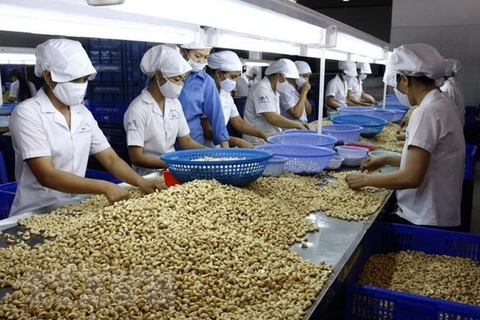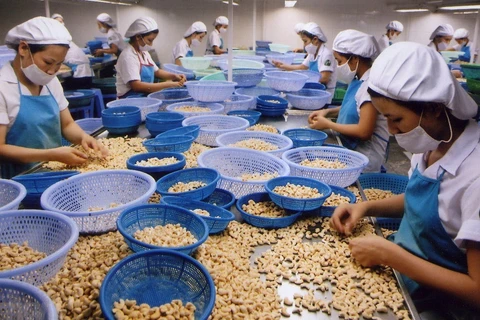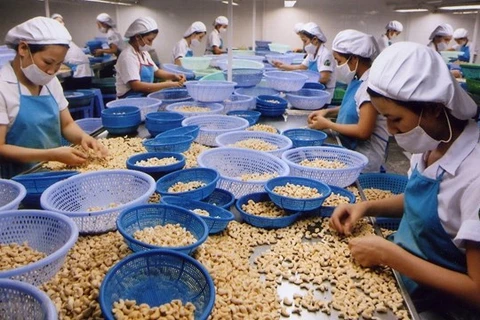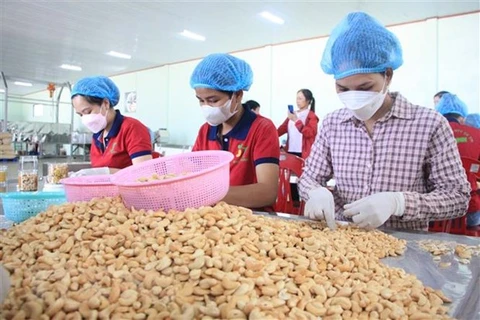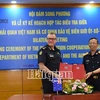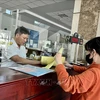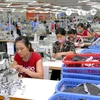 Binh Phuoc province is considered Vietnam's cashew "capital" as the province boasts an area under the tree and production accounting for more than half of the country’s total. (Photo: VNA)
Binh Phuoc province is considered Vietnam's cashew "capital" as the province boasts an area under the tree and production accounting for more than half of the country’s total. (Photo: VNA) Binh Phuoc (VNA) – For years, Vietnam has remained the world’s largest cashew nut exporter with revenue reaching about 3 billion USD yearly.
However, besides opportunities, the country’s cashew industry is facing serious challenges, especially the fiercer competition from Cambodia and some African countries.
Tran Cong Khanh, Director of the Centre for Cashew Research and Development under the Southern Institute of Agricultural Science and Technology, said that Vietnam’s cashew industry is facing the risk of natural disaster and climate change, and fierce competition from Cambodia, West African and East African countries which have a large land fund for growing cashew.
Binh Phuoc province is considered Vietnam's cashew "capital" as the province boasts an area under the tree and production accounting for more than half of the country’s total.
Vice Chairman of the provincial People's Committee Tran Tuyet Minh said that Binh Phuoc has more than 152,000 ha of cashews, with an output of 170,000 tonnes/year.
Currently, there are 1,416 cashew processing facilities in the province.
In 2022, the province’s cashew exports topped 1 billion USD. Binh Phuoc’s processed cashew is exported to more than 100 countries and territories around the world such as Europe, the US, Japan, Australia, and China, accounting for about 70% of the export market share of the world cashew industry, and creating regular jobs for about 80,000 workers.
Besides advantages, Binh Phuoc’s cashew industry also sees difficulties and challenges. The province's raw cashew nut supply only meets about 30% of local processors’ capacity, so it still have to import raw cashew nut materials from Indonesia, Cambodia, and African countries.
Most of the local cashew processing facilities have not focused on investing in developing raw material areas. They have not supported and signed purchasing contracts with cashew growers, so the raw material supply is not stable.
In addition, the link between enterprises and farmers in the production-processing-business chain is not tightened. Many cashew processing establishments are so small with limited financial potential.
According to a representative of the Binh Phuoc Department of Agriculture and Rural Development, China and the EU have reduced the import of cashew nuts from Binh Phuoc in particular and Vietnam in general, but increased imports from African countries such as Ivory Coast, Togo, Tanzania, and Benin. In the global cashew industry value chain, Vietnam only accounts for 30%, while the remaining value belongs to international distributors and roasters.
Vice Chairman of the Vietnam Cashew Association Bach Khanh Nhut said that after more than 40 years, Vietnam's cashew industry has made great strides.
However, a paradox is that while Vietnam is the largest exporter of cashew nut in the world, in recent years, the amount of cashew imported into Vietnam has increased rapidly, he said.
“It is the consequence of allowing the import of cashew into Vietnam without applying measures to protect the domestic cashew processing industry,” said Nhut.
A strategic solution for the Vietnamese cashew industry in general and the Binh Phuoc cashew industry in particular is to switch to processing diverse products to meet the different needs and tastes of consumers, he said./.

